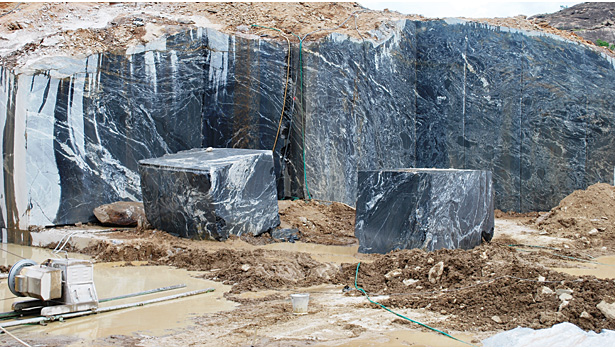Journeying Via Granite Quarries in South Africa: A Visual Odyssey
Journeying Via Granite Quarries in South Africa: A Visual Odyssey
Blog Article
Uncovering the Rich History and Sustainable Practices of Granite Quarrying
As we stand on the precipice of revealing the detailed tapestry of granite quarrying, a journey via time reveals not simply the physical act of removing stone but additionally the social and historical importance woven right into the extremely material of this practice. From the ancient beginnings that laid the structure for modern-day quarrying strategies to the sustainable practices that are forming the future of this market, each sculpt mark on granite surface areas informs a tale waiting to be unearthed (granite quarries in south africa). The heritage of granite quarrying stretches far beyond plain extraction; it is a testimony to human resourcefulness, resilience, and the enduring appeal of this marvelous stone
Ancient Beginnings of Granite Quarrying
Dating back to old worlds, the practice of quarrying granite has been an indispensable component of human background and architectural innovation. The earliest evidence of granite quarrying go back to old Egypt, where substantial pyramids and intricate sculptures were crafted from this durable rock. The Egyptians made use of primitive tools to remove granite blocks from quarries, showcasing the value of this material in their huge constructions.
Moving onward in history, the Greeks also made considerable payments to the quarrying of granite. The Greeks made use of granite in various architectural marvels, such as holy places and statuaries, showing their ability in shaping and sculpting this durable rock. The Romans further fine-tuned the strategies of quarrying granite, employing sophisticated devices like chisels and hammers to extract and form granite for their renowned frameworks.
Through the centuries, the method of quarrying granite has actually progressed, with modern-day innovations improving effectiveness while maintaining the ageless charm of this natural rock - granite quarries in south africa. From old human beings to contemporary home builders, the legacy of granite quarrying continues to form our globe
Advancement of Quarrying Methods
The advancement of quarrying techniques has actually been marked by a constant progression towards greater effectiveness and precision in drawing out granite. From the fundamental approaches utilized by our ancestors to the sophisticated innovations made use of in modern quarrying procedures, the industry has gone through substantial developments. Early quarrying methods included manual work with basic devices such as knives, hammers, and wedges to draw out granite blocks from the earth. As civilizations progressed, strategies like fire-setting and primitive nitroglycerins were presented to assist in the removal process.
In more recent times, the development of machinery revolutionized the quarrying market, allowing much faster removal rates and enhanced productivity. Technologies such as diamond cable saws, high-pressure water jets, and pneumatic drills have actually become conventional in contemporary quarries, enabling specific cutting and decreased waste. Developments in computer-controlled tools and 3D modeling have actually enhanced quarrying procedures, leading to minimal ecological effect and boosted sustainability practices. As the need for granite proceeds to increase, the evolution of quarrying techniques stays indispensable to meeting have a peek at these guys sector requires successfully and sustainably.
Social Relevance of Granite
Granite holds an extensive social significance throughout various worlds due to its enduring existence in building masterpieces and prized monuments. From the magnificent pyramids of Egypt to the detailed makings of the Angkor Wat holy place in Cambodia, granite has been a product of selection for revealing majesty and long life in social heritage. In old Rome, granite columns decorated temples and public structures, symbolizing strength and permanence. The cultural relevance of granite expands past its physical characteristics; it embodies durability, security, and eternity, making it an icon of withstanding traditions and traditions.

Sustainable Practices in Quarrying
Amidst the rich history of granite see here now quarrying and its cultural significance lies an expanding emphasis on lasting techniques within the market. As environmental recognition and concerns about source deficiency have actually enhanced globally, the quarrying market has actually progressively accepted sustainable approaches to minimize its influence on the setting and bordering communities.

Furthermore, improvement and rehab of quarry sites post-extraction are essential to lasting methods. By restoring quarried areas to an all-natural or helpful state, such as creating wildlife habitats or leisure areas, quarriers can counter the environmental footprint of their procedures and add positively to the regional community.
Legacy of Granite Quarrying
With a historic backdrop soaked in craftsmanship and commercial progression, what sustaining effect has granite quarrying left on the landscape of modern-day society? The heritage of granite quarrying goes beyond plain extraction techniques; it has shaped architectural marvels, city landscapes, and cultural heritage worldwide. The durable nature of granite has made it a preferred selection for monoliths, buildings, and infrastructure, standing as a testimony to the ability and virtuosity of quarry employees across generations.
In addition, the economic footprint of granite quarrying can not be forgotten. The industry continues to offer job opportunity and drive neighborhood economic climates in regions where granite removal is common. It has actually find out here now also stimulated technical developments in quarrying strategies and devices, causing extra effective and lasting methods.
In regards to sustainability, the legacy of granite quarrying consists of efforts to minimize environmental effects via recovery jobs and responsible resource monitoring. By balancing financial interests with environmental stewardship, the market aims to guarantee that future generations can continue to take advantage of this enduring natural deposit.
Conclusion

Report this page